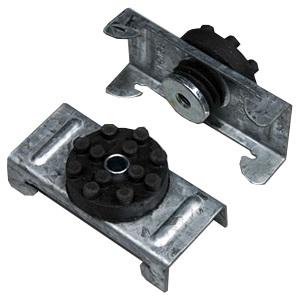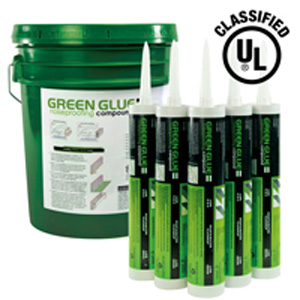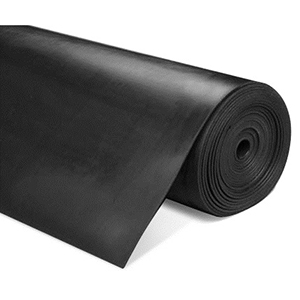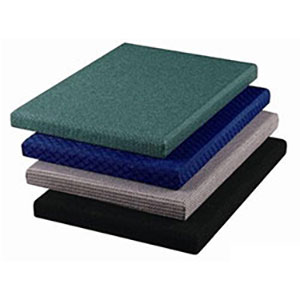Sound Isolation Clips

All noise is vibration; think about the way you feel the sound from a home theater system by touching the wall, or the car next to you that has the sound blasting so high it shakes your windows. What you feel is vibration, caused by low frequency noise. Vibration easily transfers through layers of hard material that are all screwed together, like your walls or floors. Typically, a wall is drywall sheets, screwed to studs with more drywall sheets on the other side – everything is connected, so the noise level from one side to the other doesn’t drop much at all. To block vibration (low frequency noise) through a wall or ceiling Sound Isolation Clips are the most effective, economical solution.
Floating Walls
A typical wall has studs and drywall screwed directly to the studs. To block vibration, sound isolation clips are screwed to the studs first, a simple metal channel is snapped into the clips, and the drywall sheets are screwed to the metal channel, not the studs. Now the drywall is floated, meaning not actually screwed directly to the studs. Vibration (noise) is absorbed by the sound isolation clips, before it ever gets to the studs; this blocks noise in both directions, not just one.
Very Hard to Block Noise
Low frequency or extremely loud noise is very hard to block by just adding MLV, or Green Glue between sheets of drywall. A better option is using sound isolation clips to float the wall, and combine that with mass loaded vinyl or green glue between 2 layers of drywall. The combination of floating the drywall, and using materials of different thickness and density will maximize the amount of noise that will be blocked. This system is our standard for Home Theater, Hotel, Mixed-use Commercial, and Multi Family walls.
Datasheet for Sound Isolation Clips
Complete the form on right or call us at 704-504-1127 to discuss your project and we will provide a free consultation, and products that work, every time.



